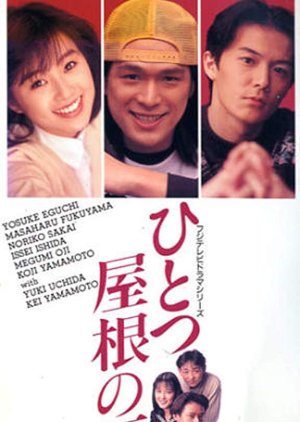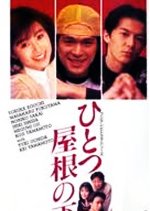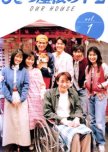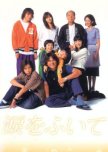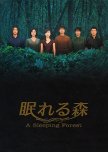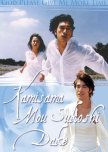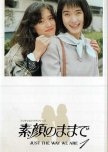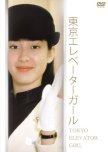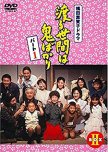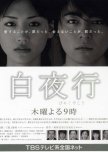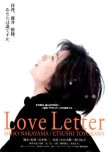 A Brief History of Japanese Dramas
A Brief History of Japanese Dramas - Français
- English
- magyar / magyar nyelv
- dansk
- Titre original: ひとつ屋根の下
- Aussi connu sous le nom de: Hitotsu Yane no Shita , Our House , Under the Same Roof
- Scénariste: Nojima Shinji
- Réalisateur: Nakae Isamu, Nagayama Kozo
- Genres: Vie quotidienne, Drame, Famille
Distribution et équipes
- Eguchi YosukeKashiwagi TatsuyaRôle principal
- Fukuyama MasaharuKashiwagi MasayaRôle principal
- Yamamoto KojiKashiwagi FumiyaRôle principal
- Sakai NorikoKashiwagi Koyuki / Kudo KoyukiRôle principal
- Oji MegumiKashiwagi KoumeRôle principal
- Ishida IsseiKashiwagi KazuyaRôle principal
Critiques

Many consider the 1990’s a golden age in Japanese drama. It’s been said there was a certain spark at that time, an outpouring of talented writers and actors, even more daring scripts and sizzling romances. Unfortunately I have yet to experience many of these gems from another era. But after Hitotsu Yane no Shita (Under One Roof), believe me when I say they will be a priority and a must! As one whose go-to genre must be considered “family,” I cannot remember the last time I’ve seen one as memorable or involving. Plus the screenwriter is Nojima Shinji (Pride), so how can you go wrong?
Viewers join Kashiwagi Tatsuya—or An-chan—as he attempts first to reunite with his scattered siblings, then to keep them together again. But can blood ties bridge seven years’ worth of separation, resentment, and loneliness? Are they better off as a family or apart in their new situations? Hitotsu Yane no Shita ventures to answer these questions, focusing on the Kashiwagis and their struggle to live both as individuals and a family. Each sibling is granted their own plot line, from which many types of stories spring (some with shockingly mature themes); these build up throughout the series and connect to the final arc with a masterful touch. What stays constant across the board is the unique humor and gentle warmth that allows Hitotsu Yane no Shita continued relevance. One might connect deeply with the members of the Kashiwagi clan, and then leave the drama feeling they’d all grown a lot. What an incredible experience—though I must admit I didn’t watch quickly. It would have meant saying goodbye to this wonderful family, and I wasn't ready to for a while.
For those familiar with Wakamono Tachi, they are very similar to one another. They have the same high-speed bickering, brotherly wrestling matches, etc.
Casting a family must be tricky. If one member fails to ignite chemistry with the others, you can bet the whole thing will be thrown askew. But have you seen this cast? It’s pretty much perfect for the purpose. First we have Eguchi Yosuke, now an exquisite veteran actor, but apparently he could carry a drama even twenty years ago. His An-chan is a lovable dummy who follows his heart with admirable determination and adores Ken-Ken the Dog (Muttley from Whacky Racers!); beneath all his silly bluster, An-chan is reliable, hard-working, and every bit a pillar of strength. Eguchi-san proves his ability to perform comically and turn right around with the most believable tears time and again. The second brother Masaya/”Chi-niichan,” lands us another present-day veteran in Fukuyama Masaharu. Perhaps being a good friend to Eguchi-san helped, but their scenes make you believe they might actually be brothers. An early episode between the two could be considered one of the best of the series for that matter. And if you allow me a moment’s shallowness, both are as cute as anything in Hitotsu Yane no Shita.
Of the other Kashiwagi siblings, most memorable are Yamamoto Koji and Sakai Noriko. Sakai-san performs beautifully as the backbone of the Kashiwagis, the adopted daughter Koyuki; her presence is calm, gentle one without being pretentious, and there’s a maternal strength in her performance that’s very appealing.
For someone who grew up in the 90’s, Hitotsu Yane no Shita is a delightful nostalgia trip. Every single track sent me back in time and was an utter delight, especially paired with the series. Probably most memorable will be the fantastic theme song, “Saboten no Hana” by TULIP; between this and the family Muttley-laugh, there's a lot that I'll take away from this series. You can bet it's worth watching twice, too~
Cet avis était-il utile?

Acting : a very good casts and their act really well and their chemistry as siblings really convincing.. ^^
music : i still remembered the song, it is so catchy and works great thriugh the series
i rewatch it 2 times already and still planning to watch it.. :)
Cet avis était-il utile?

